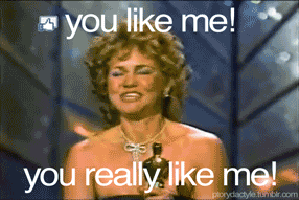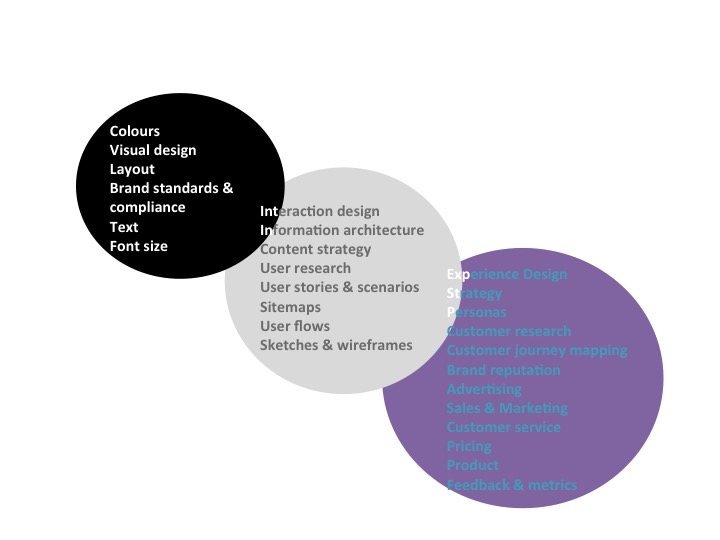It’s one of those things being debated a lot lately and rightly so. As we are living in the age of digitisation, the term user and customer are being used interchangeably especially when referring to the design of an ‘online’ or digital experience. What is the difference between UX (User Experience) and CX (Customer Experience)? Where does one end or the other begin? Some say there is no difference, that UX and CX are interchangeable. I. Completely. Disagree.
Once upon a time, I was a student studying for a degree in Computer Science. Now unless my professors were talking a whole bunch of shite, I’m pretty sure my time in the User Experience lectures consisted of me not just telling jokes about last Saturday’s shindings, but about the use of buttons, icons, navigation and accessibility to aid a users interaction with a piece of software, with the aim of guiding them to complete a task.
Ok so I know it was a while ago since I was at University, but my point is that the principle of User Experience remains the same, even in the age of ‘digitisation’. The design of a ‘User Experience’ is the interaction between a user and a piece of software or technology. It is about how we use design to guide the users interactions with the technologies interface, so that the user is able to complete an action or a series of tasks in the simplest way possible. For example, making sure there is text in the right language, in a readable font size and colour so the user can follow the instructions required to register a username and password. Making sure the page layout and flow helps to guide the user to complete the action rather than abandon the page and pull out their eyelashes in frustration. And increasingly and of equal importance, making sure the text, use of colour and interactions, call’s to actions etc are all designed with accessibility in mind.
Think through the steps of taking a picture and posting it onto your Instagram. The flow and navigation, the text and arrows that help to navigate what you need to do and hinting that there’s a next step. All of that is the User Experience.
Now Customer Experience – ah my favourite topic, it makes me smile. Customer Experience encompasses the ‘User Experience’ and the ‘User Interaction’, but it’s so much more than this. It’s the feel, the flow, the smell, the physical, the subliminal and it’s the way it makes you feel. Some are constantly trying to quantify it and create new ways to measure it. Customer experience is the mix of the emotional and rational outcomes of an experience – whether it’s digital, physical or artifical. It’s not just the experience the customer has during one interaction like posting a picture. Customer Experience is the outcome of a series of interactions with an organisation. This starts from the moment the customer become aware of the organisation, right up until the moment they leave, stop using the organisation’s product or services or deactivate their account. Actually on editing I would even challenge my own last point. It extends beyond the customer leaving whether they had a good or bad experience, because they are likely to tell someone else about it. Telling someone else about an organisation then becomes someone else’s ‘first’ experience of that organisation. So I guess we can say the Customer Experience journey is a cyclical one.
So back to Instagram. The User Experience on a smartphone and the User Experience on a desktop will be largely determined by the UI (layout, use of buttons, colour) and the UX design (information architecture, content strategy, screen flows, user testing). If I include all of that and add the complexity of the emotional and rational outcomes during my customer journey with Instagram. In other words, the journey I’ve taken from creating my account, to posting pictures to getting likes, spying on other people, getting new followers:

The shares, the loves, the comments – and how that makes me me feel or the impact it has on me personally or my brand. THAT, my friend… THAT is the customer experience. And that is why UX does not = CX.

#AllExperiencesMatter | #CXMatters
Having said that, what I will admit is that poorly designed UX will lead to bad CX. While the two should not be used interchangeably, in the age of digitisation, a well designed UX is a strategic advantage for organisations. This is because great user experience almost always becomes the litmus test for a good Customer Experience.
I put together the picture blob below, to outline some of the elements and tasks involved in UI, UX & CX. This is not an exhaustive list, but enough to get the blurred lines cleared up. So, exam question – which one is which? Answers in comments below!

How to design for great Customer Experiences
- Research and understand:
Understand what your most valuable customers look like and what experiences are shaping their expectations of organisations today:
Who are your customers, what do they do and like, what makes them tick, what do they do and which organisations are they interacting with
2. Visualise:
Take your understanding and visualise the future by generating ideas and concepts iteratively.
No one big idea ever really changes the future or a new product. It’s sum of small and different ideas, so visualise collaboratively and keep iterating until you have something you are happy with.
3. Design the entire journey then put it out there.
Design the experience, share it, put it on the market. To validate your customer experience, you’ve got to put it out there. But before you do think about how the vision you’ve created will play out in the real world. Here are just some of the stages of the customer experience you’ll need to nail.
Awareness: What will it look like or feel like for the customer who has just heard about your product?
Purchasing: Where will they see it? What will your pricing strategy say about the experience they will have with your product or service? How will they access the product?
Delivering & receiving: How will it be pacakaged? Are you going for luxury or are you going for green and eco-friendly?
Sharing: People talk. ‘Nuff said. What will they say about your product or service to others? Because all of the above will impact what they say to others and how others will start their experience with your brand. Remember, a customer journey is a cyclical one.
4. Evaluate and measure
So how was it for you? Ask you customers, improve the stages of the journey that didn’t quite meet their expectations or yours! Continuously and relentlessly pursuit the improvement of your customer’s journey.
Hi Dola,
Love the article, it really explains in a proper way how important user experience and customer experience is while in the design process.
Research is so incredibly important so I thank you for such a great piece 😀
LikeLike
Thanks for your comment Fernanda. Thanks also for your email to me. I have read the article your organisation has written and completely agree with the thinking, it really ticks the boxes and the points I’ve laid out in this piece. I’ll leave a link here for my readers to explore also: https://www.toptal.com/designers/ux/cx-design
LikeLike